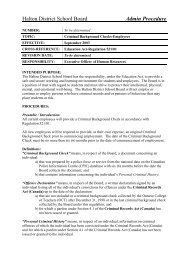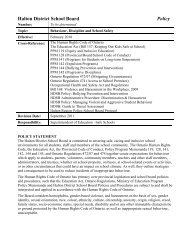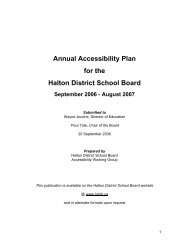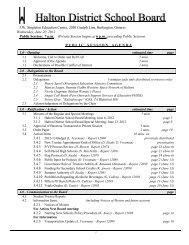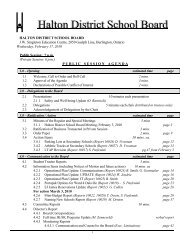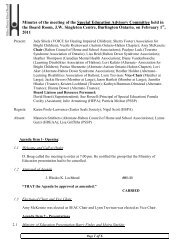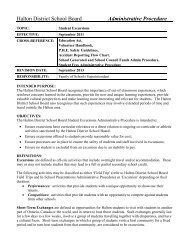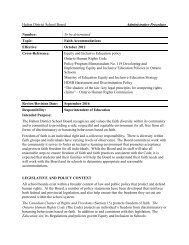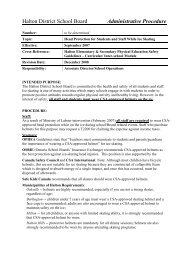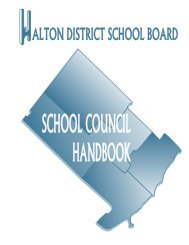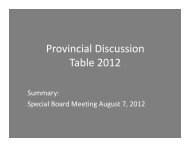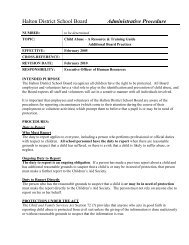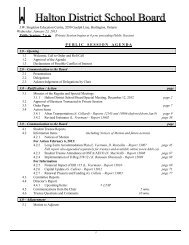Supporting English Language Learners in Grades 1 to 8
Supporting English Language Learners in Grades 1 to 8
Supporting English Language Learners in Grades 1 to 8
You also want an ePaper? Increase the reach of your titles
YUMPU automatically turns print PDFs into web optimized ePapers that Google loves.
Orientation is not a one-time event for newcomer families. As differences<br />
between the school <strong>in</strong> the home country and Ontario become apparent, new<br />
questions may arise. Parents may also need support <strong>in</strong> ga<strong>in</strong><strong>in</strong>g awareness of<br />
the complex nature of learn<strong>in</strong>g the language of <strong>in</strong>struction at the same time as<br />
their children are learn<strong>in</strong>g the curriculum. They need <strong>to</strong> become aware of how<br />
long it takes students <strong>to</strong> acquire <strong>English</strong> for everyday and academic purposes.<br />
They also need <strong>to</strong> understand the goals of the ESL and ELD programs, the<br />
organization of the programs at the school, and the approaches <strong>to</strong> <strong>in</strong>struction<br />
and assessment.<br />
ESL and ELD <strong>in</strong>struction supports student learn<strong>in</strong>g <strong>in</strong> a variety of ways:<br />
••<br />
learn<strong>in</strong>g the language of <strong>in</strong>struction;<br />
••<br />
<strong>in</strong>tegrat<strong>in</strong>g academic language and literacy skills <strong>in</strong> all subjects;<br />
••<br />
develop<strong>in</strong>g concepts, learn<strong>in</strong>g skills, and critical-th<strong>in</strong>k<strong>in</strong>g skills;<br />
••<br />
us<strong>in</strong>g <strong>in</strong>formation technology effectively;<br />
••<br />
help<strong>in</strong>g students <strong>to</strong> become active learners, who take responsibility for their own learn<strong>in</strong>g<br />
and who participate fully <strong>in</strong> their classes;<br />
••<br />
us<strong>in</strong>g <strong>in</strong>formation technology effectively.<br />
Approaches <strong>to</strong> <strong>in</strong>struction and assessment that may be different from those of an ELL’s<br />
home country <strong>in</strong>clude:<br />
••<br />
the importance of oral language as a basis for learn<strong>in</strong>g and literacy (e.g., purposeful/<br />
accountable talk);<br />
••<br />
the <strong>in</strong>teractive nature of the Ontario classroom (e.g., work<strong>in</strong>g with peer partners and <strong>in</strong><br />
small groups, teacher-student conferences);<br />
••<br />
the wide range of <strong>in</strong>structional strategies <strong>in</strong>volv<strong>in</strong>g a variety of learn<strong>in</strong>g styles;<br />
••<br />
the focus on process (with attention <strong>to</strong> students’ thoughts, reflection, and personal<br />
application of new learn<strong>in</strong>g), as well as product;<br />
••<br />
ongo<strong>in</strong>g assessment used for different purposes – assessment for learn<strong>in</strong>g, as learn<strong>in</strong>g,<br />
and of learn<strong>in</strong>g.<br />
30<br />
<strong>Support<strong>in</strong>g</strong> <strong>English</strong> <strong>Language</strong> <strong>Learners</strong> <strong>in</strong> <strong>Grades</strong> 1 <strong>to</strong> 8



